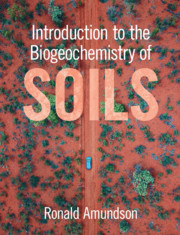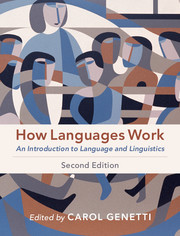Refine search
Actions for selected content:
36809 results in Cambridge Textbooks
Frontmatter
-
- Book:
- Learning to Teach in a New Era
- Published online:
- 24 March 2022
- Print publication:
- 15 September 2021, pp i-iv
-
- Chapter
- Export citation
1 - Teaching in the twenty-first century
- from Part I - Introduction
-
-
- Book:
- Learning to Teach in a New Era
- Published online:
- 24 March 2022
- Print publication:
- 15 September 2021, pp 8-34
-
- Chapter
- Export citation
Appendix: Answers to learning activities
-
- Book:
- Making Sense of Number
- Published online:
- 17 September 2021
- Print publication:
- 15 September 2021, pp 181-195
-
- Chapter
- Export citation
Foreword to the first edition 1 by clare kosnik
-
- Book:
- Learning to Teach in a New Era
- Published online:
- 24 March 2022
- Print publication:
- 15 September 2021, pp v-viii
-
- Chapter
- Export citation
Index
-
- Book:
- Making Sense of Number
- Published online:
- 17 September 2021
- Print publication:
- 15 September 2021, pp 200-204
-
- Chapter
- Export citation
Acknowledgments
-
- Book:
- Learning to Teach in a New Era
- Published online:
- 24 March 2022
- Print publication:
- 15 September 2021, pp xix-xix
-
- Chapter
- Export citation
Frontmatter
-
- Book:
- Making Sense of Number
- Published online:
- 17 September 2021
- Print publication:
- 15 September 2021, pp i-iv
-
- Chapter
- Export citation
Preface
-
- Book:
- Making Sense of Number
- Published online:
- 17 September 2021
- Print publication:
- 15 September 2021, pp ix-x
-
- Chapter
- Export citation
9 - Understanding classroom management
- from Part III - Professional practice
-
-
- Book:
- Learning to Teach in a New Era
- Published online:
- 24 March 2022
- Print publication:
- 15 September 2021, pp 278-308
-
- Chapter
- Export citation
9 - Problem solving
-
- Book:
- Making Sense of Number
- Published online:
- 17 September 2021
- Print publication:
- 15 September 2021, pp 159-180
-
- Chapter
- Export citation
Foreword to first edition 2 by John Loughran
-
- Book:
- Learning to Teach in a New Era
- Published online:
- 24 March 2022
- Print publication:
- 15 September 2021, pp ix-x
-
- Chapter
- Export citation
2 - Mathematics and numeracy: the role of number sense
-
- Book:
- Making Sense of Number
- Published online:
- 17 September 2021
- Print publication:
- 15 September 2021, pp 17-32
-
- Chapter
- Export citation
11 - Communication skills with students, staff and parents/caregivers
- from Part IV - Professional engagement
-
-
- Book:
- Learning to Teach in a New Era
- Published online:
- 24 March 2022
- Print publication:
- 15 September 2021, pp 334-361
-
- Chapter
- Export citation
6 - Planning for teaching
- from Part III - Professional practice
-
-
- Book:
- Learning to Teach in a New Era
- Published online:
- 24 March 2022
- Print publication:
- 15 September 2021, pp 182-217
-
- Chapter
- Export citation
References
-
- Book:
- Making Sense of Number
- Published online:
- 17 September 2021
- Print publication:
- 15 September 2021, pp 196-199
-
- Chapter
- Export citation
12 - Becoming a teaching professional: scoping the ethical and legal dimensions
- from Part IV - Professional engagement
-
-
- Book:
- Learning to Teach in a New Era
- Published online:
- 24 March 2022
- Print publication:
- 15 September 2021, pp 362-405
-
- Chapter
- Export citation
3 - Effective pedagogy for student learning
- from Part II - Professional knowledge
-
-
- Book:
- Learning to Teach in a New Era
- Published online:
- 24 March 2022
- Print publication:
- 15 September 2021, pp 68-102
-
- Chapter
- Export citation

Solid State Materials Chemistry
-
- Published online:
- 14 September 2021
- Print publication:
- 01 April 2021
-
- Textbook
- Export citation

Introduction to the Biogeochemistry of Soils
-
- Published online:
- 09 September 2021
- Print publication:
- 17 June 2021
-
- Textbook
- Export citation

How Languages Work
- An Introduction to Language and Linguistics
-
- Published online:
- 09 September 2021
- Print publication:
- 08 November 2018
-
- Textbook
- Export citation
